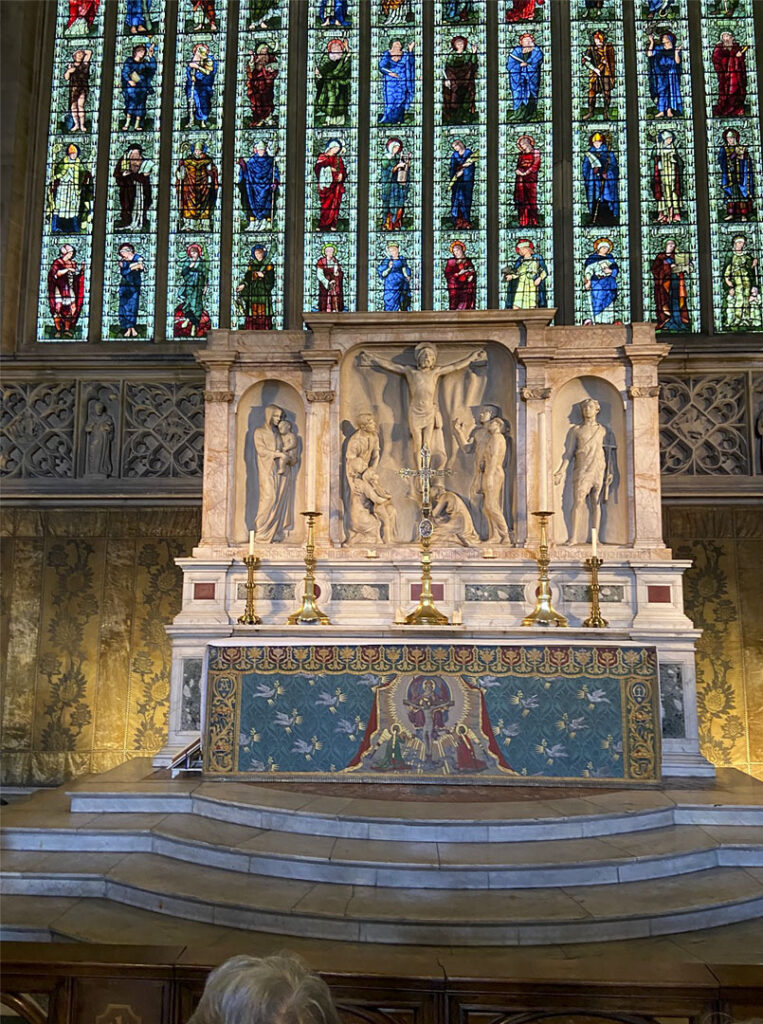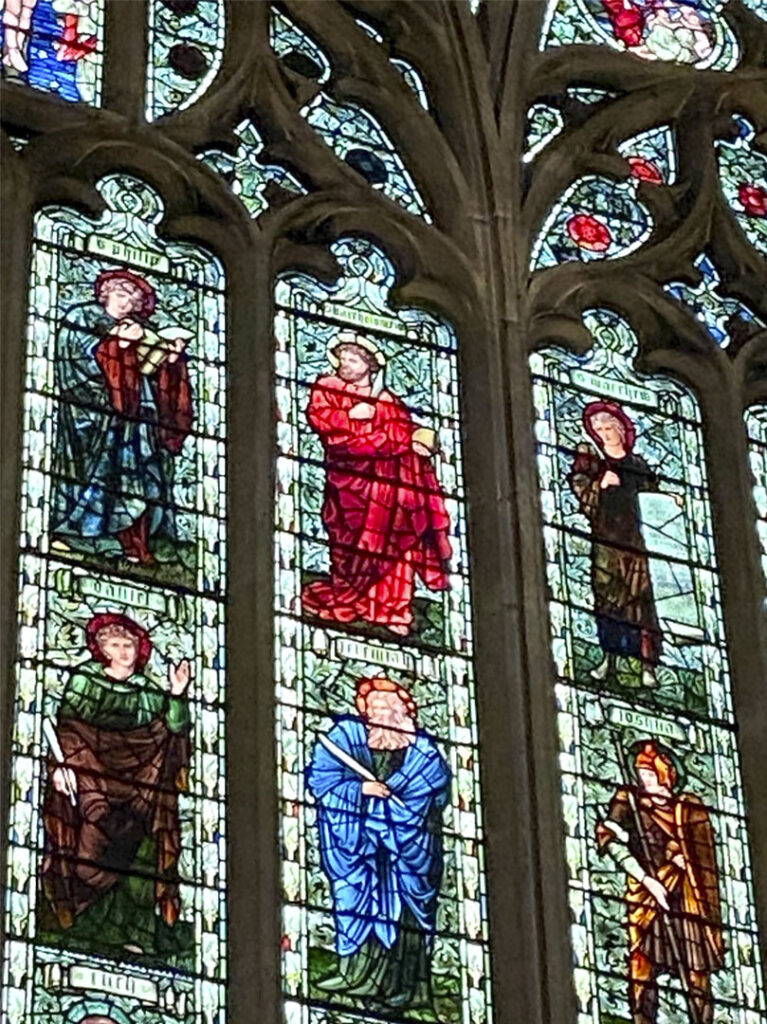
During November the History of Design group visited Holy Trinity Church, Sloane Square. Read John Holdstock’s account and view his pictures below.
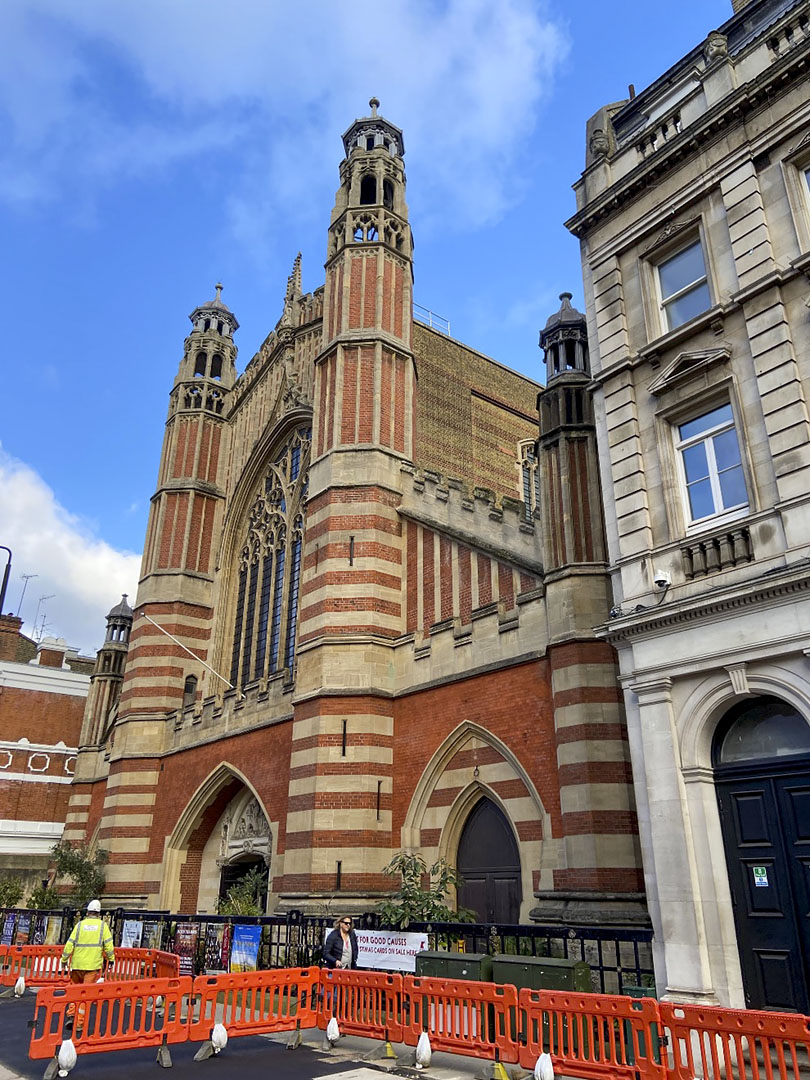
Holy Trinity, Sloane Square, was built in 1888–90, to a striking Arts and Crafts design, by the architect John Dando Sedding. It was paid for by 5th Earl Cadogan, in whose London estate it lay. It replaced an earlier building which, at the time of its demolition, was less than 60 years old.
https://en.wikipedia.org/wiki/Holy_Trinity,_Sloane_Street
The Arts & Crafts’ Movement began in the 1860s as a reaction to the Industrial Revolution in England, in which the mechanistic view of the world, the division of labour and the disconnect from Nature were crippling the souls of men.
https://sloanechurch.org/arts-crafts/
The church is a classic example of a late 19th century gothic style church, drawing on an eclectic range of styles including early medieval, Byzantine, pre-renaissance Italian and English Decorated Gothic. Poet laureate Sir John Betjeman, with his passion for architecture and churches, dubbed it ‘the cathedral of the Arts & Crafts Movement’, a phrase that stuck.
Sedding was a founding member of the Arts & Crafts Movement and one of the most distinguished designers and architects of his time. He was an accomplished designer of wallpaper, embroidery, metalwork and sculpture. As a founder and second master of the Art Workers’ Guild, Sedding’s aim was to revive the medieval system of cooperation between architect and craftsman.
Holy Trinity is home to a wealth of treasures from the Arts & Crafts period including works by Henry Wilson, a student of Sedding who completed the building of Holy Trinity following Sedding’s death. The angel lectern and spandrels of the nave and chancel arches were designed by Henry Hugh Armstead, the angels on the pillars of the Baroque chancel screen and panels in the choir stalls were designed by Frederick Pomeroy, the altar frontal of the entombment was carved by Harry Bates of the New Sculpture movement and the reredos is the work of John Tweed.
https://www.buildingconservation.com/articles/holytrinity/holytrinity.htm
When seven members of our Group took the Greenline to London, on a bright autumn day, to visit the ‘restoration’ church, we were in for a few surprises.
On alighting from the coach, at the Royal Albert Hall, we were greeted by a group of some 30 to 40 people standing in a line, on the back of the pavement. It was just two minutes to 11 am and we had timed our visit just right, to witness the unveiling of statues to Queen Victoria and Prince Albert, recently installed in niches in the face of the concert hall, opposite.
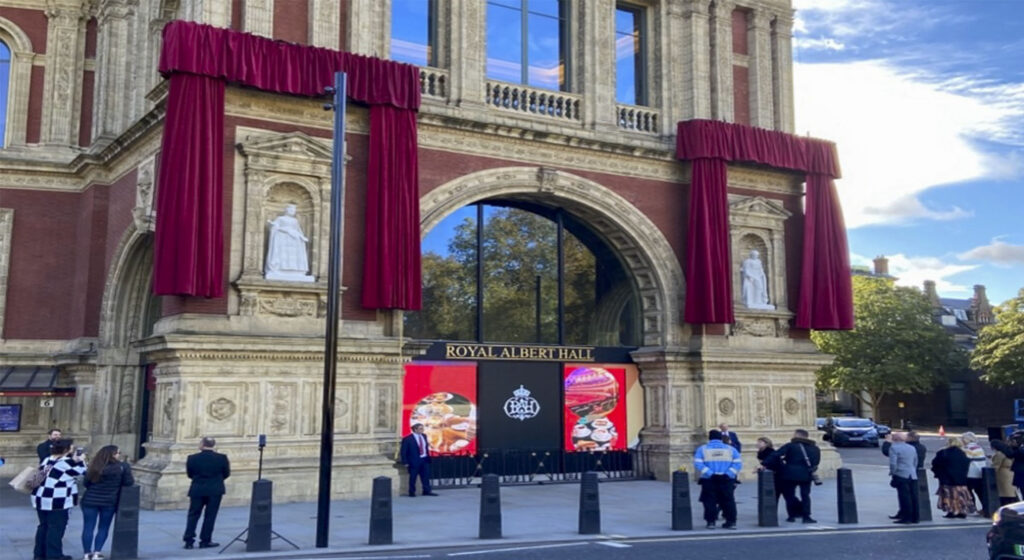

After taking the red bus down to Sloane Square and tea and coffee in Peter Jones store, we entered the church, to find ourselves being ushered into an open invitation, choir session, that was about to start in a side room adjacent to the church. On learning that we were visitors from Windsor, the ‘Director of Music’, Max Barley, welcomed us and invited us to take part in the session and enjoy a cup of soup and some bread afterwards.
We were happy to accept, only to find that the opening number was by Brahms, sung in B minor and entirely in German. It was great fun but we felt more at home, when this was followed by more familiar numbers such as ‘When I’m sixty four’ and ‘Shenandoah’.

Almost an hour later, we were back in the nave of the church, for the real reason for the visit, to be given a guided tour by Clinton McMaster, the ‘Events & Facilities Manager’ of the church.
Clinton lived up to his name. He was ‘master’ of the detail that so closely bound the church with the ‘Art and Crafts’ movement and we are most grateful to him for making our visit so rewarding.
As road works had suspended the buses back to Knightsbridge, we made our way there on foot, in time to catch the Greenline back to Windsor, tired but happy after a great day, thanks to Sue and Ornella, for organising the visit.
John Holdstock

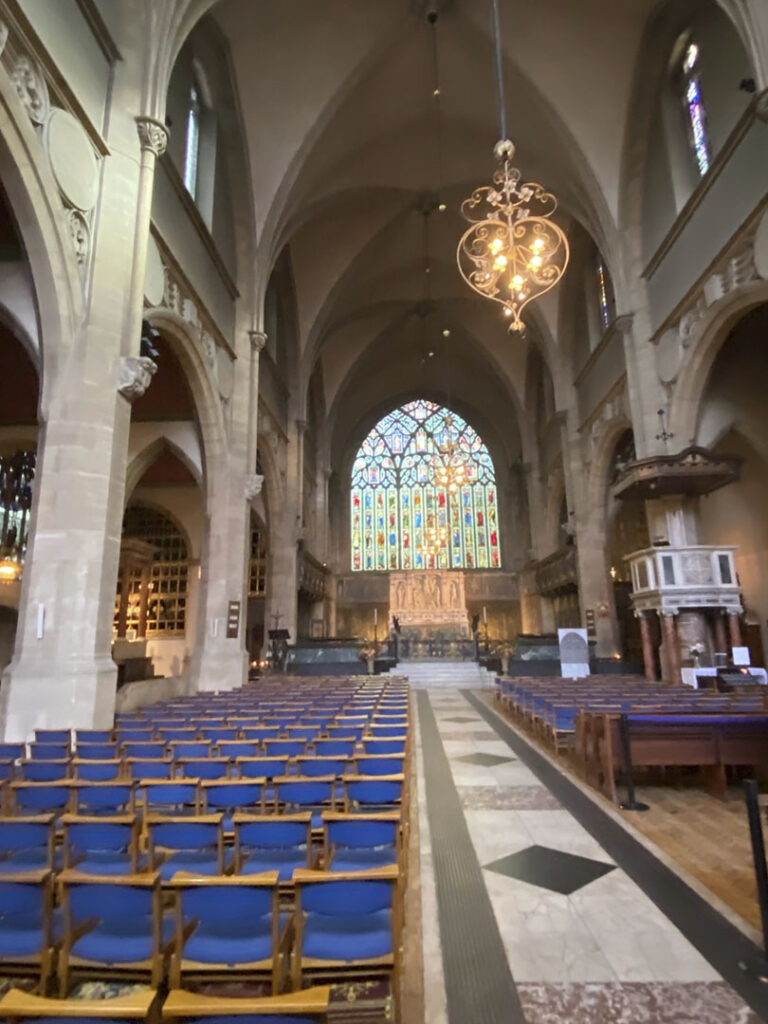
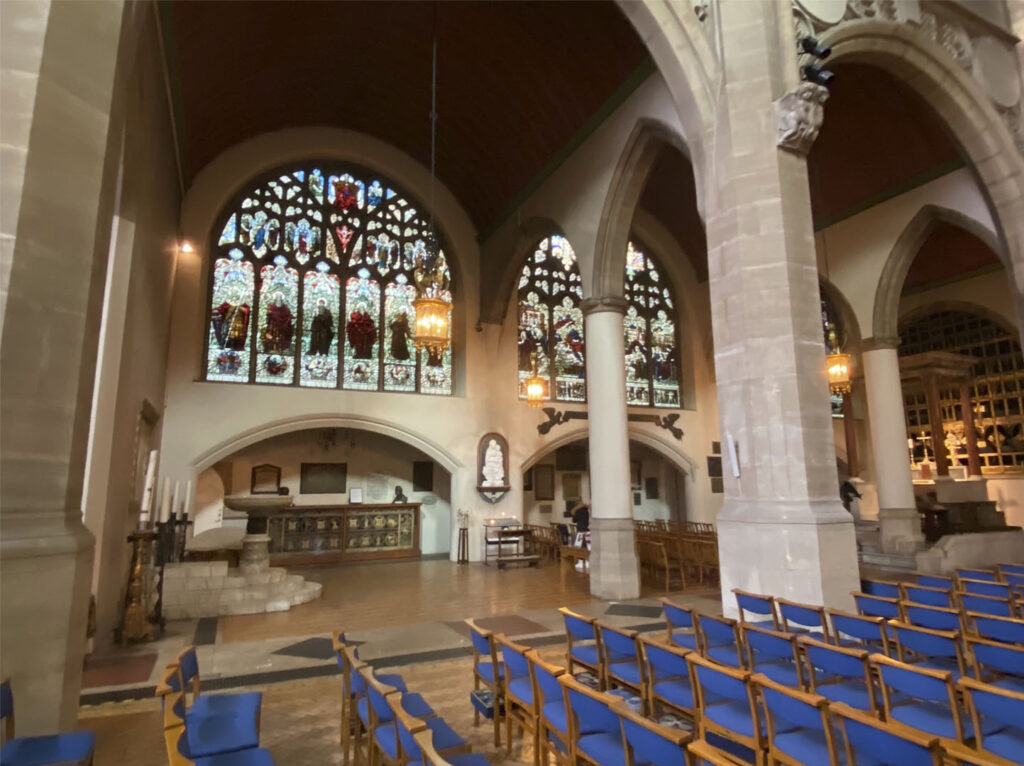
Our thanks to John Holdstock for sharing his photos.

